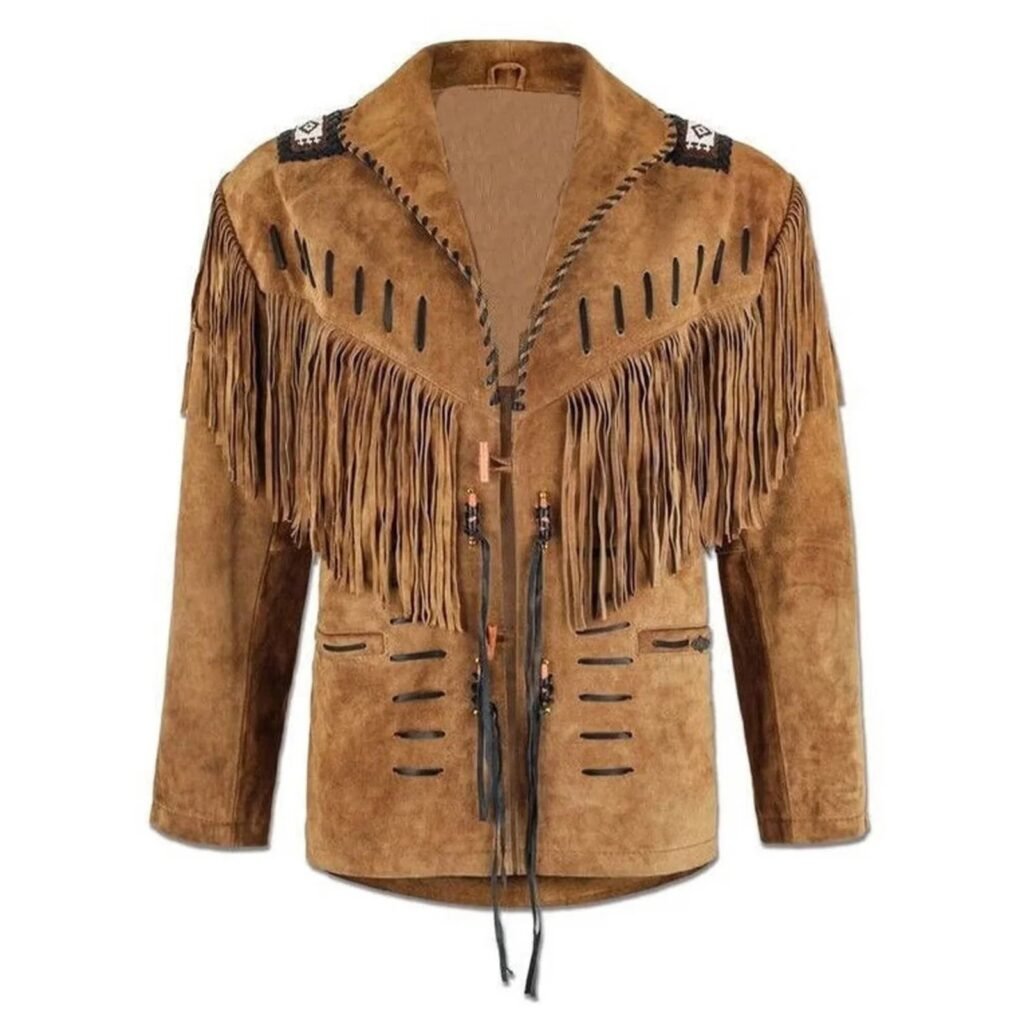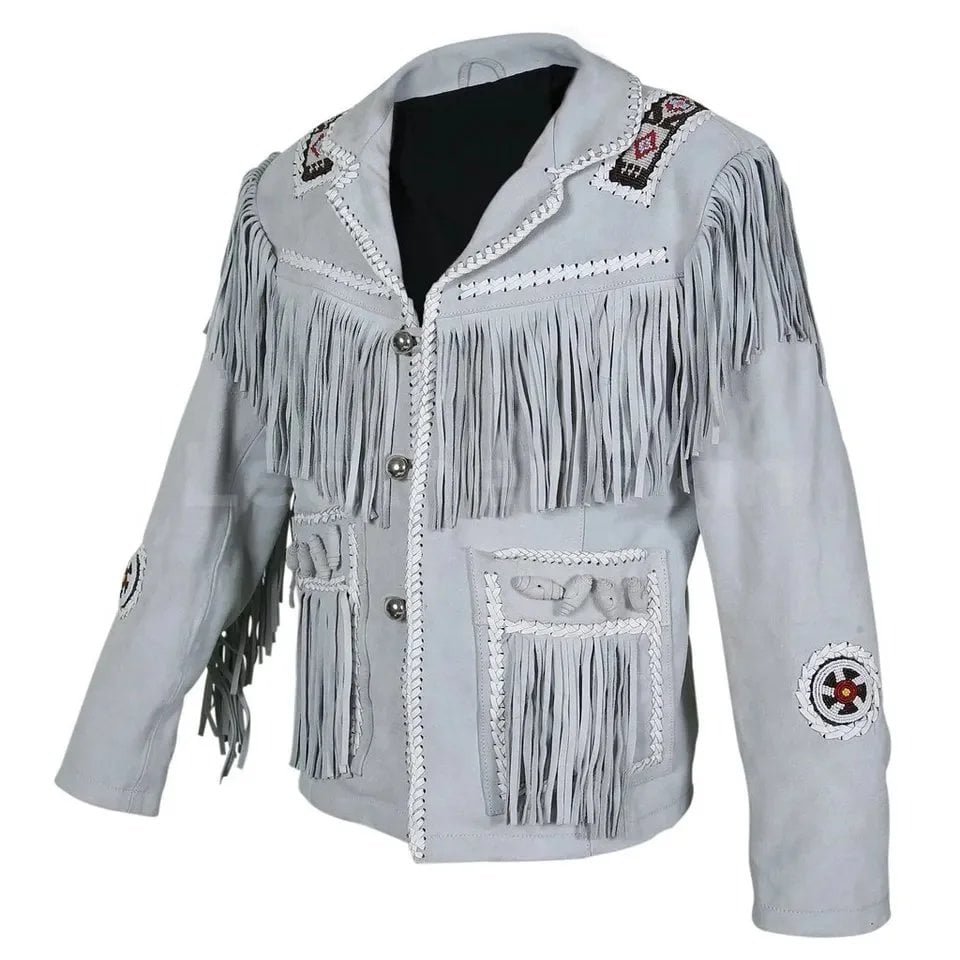Native American Jackets and Coats
Historical Significance and Cultural Importance
Native American jackets and coats possess a deep historical significance, rooted in the traditions and lifestyles of various tribes across North America. Their origins trace back centuries, serving not only as essential clothing for protection against the elements but also as a powerful cultural symbol. Traditionally, these garments were crafted from animal hides, with each material selection reflecting the region’s resources and the tribe’s hunting skills. Buffalo, deer, elk, and even fish skins were utilized, demonstrating both ingenuity and respect for nature.
The beadwork and patterns adorning Native American jackets and coats are rich in symbolism. These intricate designs are far more than mere decoration; they communicate stories, spiritual beliefs, and tribal affiliations. Each pattern and color choice carries specific meanings, often depicting natural elements like the sun, wind, animals, and plants. For example, certain geometric patterns might indicate a tribe’s lineage and history, while vibrant hues could signify the wearer’s role within the community. This symbology enhances the garments’ cultural depth, embedding each item with personal and collective identity.
These jackets and coats played crucial roles in various tribal ceremonies and social structures. They functioned as markers of social status, with elaborate designs often denoting leaders, warriors, or individuals of significant standing within the tribe. In ceremonial contexts, these garments were imbued with spiritual significance, used in rituals to invoke protection, celebrate changes in seasons, or honor ancestral spirits. Their creation and craftsmanship were skills meticulously passed down through generations, ensuring the preservation of these traditions.
Artisans perfected these techniques through apprenticeship, learning to tan hides, create dyes from natural sources, and apply beadwork with precision. This generational exchange of knowledge ensured that each piece was crafted with the utmost care and cultural reverence. By embedding stories into clothing, Native American jackets and coats serve as wearable heritage, testament to the resilience and creativity of Indigenous cultures. The meticulous processes and rich meanings encoded within these garments highlight their enduring importance in preserving tribal identities and histories.

Materials and Craftsmanship
Native American jackets and coats are a testament to meticulous craftsmanship and the use of high-quality materials. Traditional resources such as leather, fur, and porcupine quills form the backbone of these remarkable garments. Leather, often derived from animals like deer, buffalo, and elk, undergoes a rigorous preparation process. This includes brain tanning, a method that preserves the hide and makes it supple. Fur is equally valued, providing warmth and contributing to the luxurious texture of the outerwear.
The application of decorative techniques further enhances the distinctive styles of Native American jackets and coats. Beadwork, using tiny glass beads often acquired through trade, is one such art form. Beads are meticulously sewn onto the material, crafting intricate patterns that hold significant cultural meanings. Similarly, quillwork involves the delicate process of softening and flattening porcupine quills before being dyed and sewn onto the garment, creating elaborate and colorful designs.

Embroidery also plays a crucial role in the embellishment of these garments. Using sinew or plant fibers as threads, artisans stitch motifs that reflect their tribal heritage and natural surroundings. Each technique not only serves an aesthetic purpose but also carries symbolic significance, representing aspects such as spirituality, status, and identity.
Over time, the materials and methods used in crafting Native American jackets and coats have evolved to incorporate contemporary fashion elements. Modern artisans may blend traditional practices with new fabrics and synthetic dyes, resulting in garments that honor their rich heritage while catering to present-day tastes. This seamless combination of old and new techniques ensures that the legacy of Native American craftsmanship continues to thrive and inspire future generations.

Contemporary Fashion and Influence
Native American jackets and coats have left an indelible mark on contemporary fashion, significantly shaping both the aesthetic and cultural dimensions of the broader fashion industry. This influence is evident in the resurgence of traditional designs that have been seamlessly integrated into modern clothing collections. From luxury brands to streetwear labels, designers are increasingly drawing inspiration from the rich tapestry of Native American artistry, including intricate beadwork, complex weaving patterns, and distinctive silhouettes.
However, this resurgence is not without its complexities. The fashion industry must navigate the delicate balance between appreciation and appropriation. Cultural appropriation—the misuse of traditional symbols and designs without proper context or respect—remains a critical issue. Many Native communities advocate for the respectful representation of their heritage, urging designers to collaborate with Native artisans and to give credit where it is due. This respectful collaboration ensures that the cultural significance of these garments is honored and preserved.
Native American designers are at the forefront of this movement, reclaiming and revitalizing their traditional garments with contemporary twists. These designers are not only preserving their cultural heritage but also pushing the boundaries of fashion. Notable figures include Bethany Yellowtail, whose brand B.Yellowtail celebrates the beauty of her heritage through modern creations that remain rooted in tradition. Similarly, Jamie Okuma’s work is known for its intersection of traditional Native artistry and high fashion, showcasing her culture’s richness and depth.
Through these efforts, Native American jackets and coats have become symbols of cultural pride and artistic innovation. The increasing visibility of Native American designers and their work ensures that these traditional garments continue to evolve while maintaining their intrinsic cultural value. This dynamic interplay between tradition and modernity enriches the fashion landscape, offering both inspiration and a reminder of the importance of respectful cultural representation.

Preservation and Revival Efforts
In recent years, the preservation and revival of the traditional craftsmanship associated with Native American jackets and coats have become an important focal point within both Native communities and broader cultural institutions. Efforts to maintain these rich customs involve a multifaceted approach that includes educational programs, initiatives led by Native artisans, and contributions from museums and cultural entities.
Native communities are at the forefront of maintaining these traditional practices. Elders and experienced artisans are actively passing down the intricate skills and knowledge needed to create these garments to the younger generation. Various communities have established dedicated workshops and councils aimed at teaching youths the intricate beadwork, appliqué techniques, and leatherworking skills that are hallmark to these traditional jackets and coats. These educational programs are vital in ensuring that these traditions are not lost over time and help instill a sense of pride and cultural identity among the younger members.
Museums and cultural institutions are also playing an essential role in preserving these artifacts. By housing collections of historical Native American jackets and coats, they offer a glimpse into the past, showcasing the artistic and cultural significance of these garments. These institutions often collaborate with Native communities to ensure the accurate representation and respectful handling of these items. Exhibitions, workshops, and seminars organized by these entities serve to educate the public and create awareness regarding the importance of preserving such cultural heritage.
However, these preservation efforts face several challenges. The impact of globalization has led to the widespread availability of mass-produced imitations, which can overshadow traditional, handmade garments and undervalue the original craftsmanship. Additionally, ensuring cultural sensitivity and authenticity is paramount; without it, preservation efforts can inadvertently lead to the commodification or misrepresentation of Native traditions. Collaboration and continued dialogue between Native communities and cultural institutions are essential in navigating these issues and ensuring that preservation efforts respect and uphold the cultural integrity of Native American jacket and coat-making traditions.
